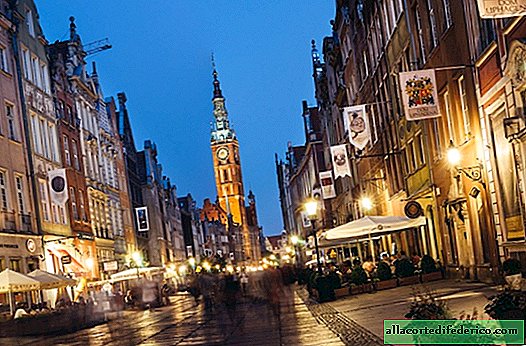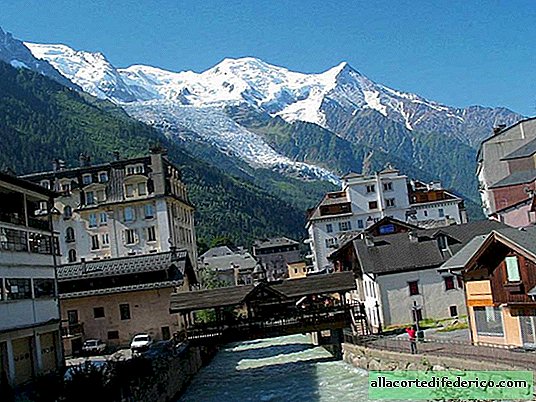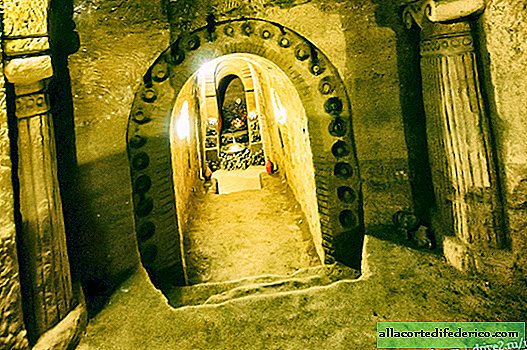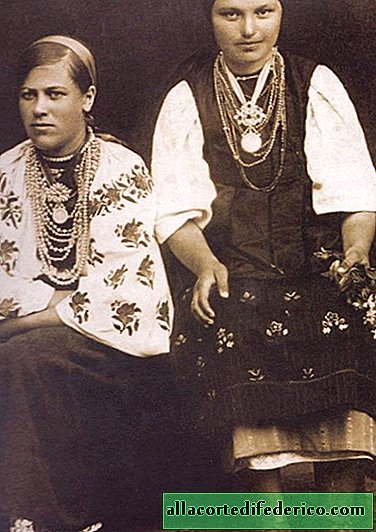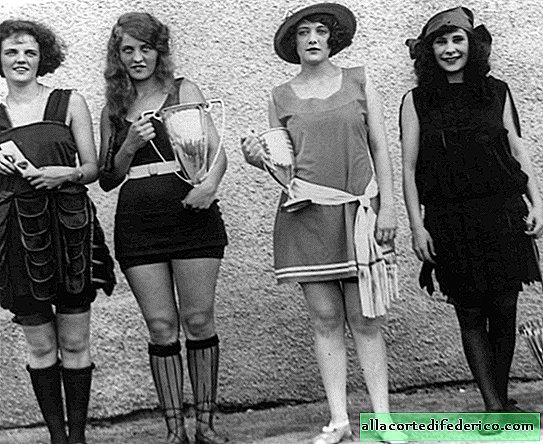Legends of Narva: Russian Tortuga and the haven of pirates
Today, my dear reader, you and I will talk about slightly forgotten and little-discussed times when lured pirates stood in government service and were personally controlled by Ivan the Terrible, and the ship, nicknamed the "Merry Bride", made a rustle in the whole Baltic Sea, and a date with this insidious person became a nightmare in the life of a European sailor. Someone will say now, so how? After all, places are far from palm trees and sweet rum! What are the pirates? But here we have not a Disney fairy tale, but a real story that could easily become the basis of a novel, film, or even a series. It is noteworthy that the so-called pirate Tortuga for all this drunken revelry was quiet and calm now Narva.
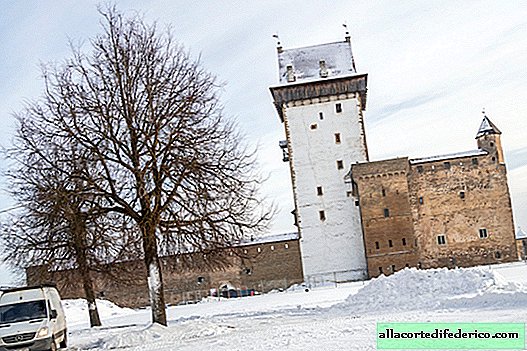
In the golden places
If you ask the locals how their small, but historically prosperous city was born, they will answer simply with an old legend. The fact is that in the local hills, where Vyshgorod now stands, grass used to grow, there were no castles, defensive structures, monuments and prosperous houses, only the tents of the local robbers stood, and bonfires were lit at night.

They lived here the life of real "gentlemen of fortune", they behaved quite recklessly and robbed the caravans of Russian merchants passing by, and hid the acquired and quarried in an impregnable rock. Therefore, when the Germans came to the aid of Slavic business colleagues, a legend arose about a city built on three layers of gold. But in the historical result, the city became part of Sweden, and even at one time they planned to make it the capital of this state.

But it was more fun later, when the Russian tsar wanted to take the land from the neighbors, he sees that a city is developing near him and begins to drown in a gleam of gold. What to do? He goes to a dinner party, they drink and have a snack there. Well, he says to the Swedish king:
- I want to buy your land, sell it as a neighbor.
- How much do you want?
“A little, only the size of one horse's skin.”
The Swedish king accepted this request as a joke and laughed answered:
- Take it, take it! I do not want a fee, I give it away for free!

Well, our cunning young man turned out to cut a horse's skin into thin rags, tied them into a single rope and grabbed so much land that was enough to build a fortress. The Swede was already biting his elbows from such a puncture, but how to cancel this royal word without loss of honor? But no way. Ours understood that the king simply deceived would not leave this insidious act, so we decided to isolate ourselves from the enemy and went out with shovels into the field, starting to dig a new channel for the river. She did not strongly resist and divided the two castles with a natural border.

King under a woman's skirt
Although let's better talk about a later clash between the Scandinavian brothers and the Slavic and plunge into another story of Narva, where we will discuss a rather sensitive issue with the capture of an enemy castle. Rumor has it that after the Swedes surrendered the city to Peter I, the commandant in charge of the fortress was tormented by interrogations, trying to get a true answer, how could he allow such a shame. Rumor has it, the displeased commandant was able to express the whole point with just an angry comment: "Because this" Russian dog "can only fight under a ladies' skirt."

Naturally, he shouted not only in his hearts, but referring to one known fact. It turns out that when the Russian troops came close to Narva, they were surprised by dramatic changes in the defensive structure, because only before the start of the Northern War the city was overgrown with new fortifications and bastions, which was a complete surprise for the Russian troops.

Then Peter I decided to personally visit inside Narva and study new fortifications, well, he had a shift in this phase, so the sovereign changed into Swedish clothes and secretly entered enemy territory. But during Peter's acquaintance with one of the defensive bastions, a brave Swedish soldier was able to identify the influential emperor and raised the alarm throughout the district.

Our ruler, however, hid from the wrath of the enemy in the house of the burgomaster Goethe, who supported the Russian soldiers and was a sort of spy in the Swedish ranks. The fortress’s commandant by the name of Gorn, the same one who was tortured during interrogations, ordered that all entrances and exits be closed, and each house should be searched for the presence of a fugitive Russian tsar.

The soldiers rummaged upside down everything, even the burgomaster’s house, but allegedly Peter I hid under the magnificent skirt of the traitor’s wife, so the Swedes did not find him. And already at night the emperor left the city fortress in a garbage cart and, thanks to Finnish fishermen, returned to his army, which the next day, knowing all the weaknesses in the fortifications, triumphantly took control of the enemy city.

Baltic Sea Pirates
By the way, in our history there is a tsar who began to engage in the fleet even before it became Peter's mainstream, because Peter I, who had been turned on ships, dreamed of the sea, and therefore Petersburg appeared, for which many thanks to him. But the story of pirates of the Baltic Sea, who was brought up by Ivan the Terrible himself, remains hardly noticeable for our history.

During the time of that Narva, captured for the first time by our troops, a port was organized here, through which the whole of Russia traded with Western Europe, but like a bone in the throat of our autocrat were Swedish and Polish pirates. They attacked merchant ships and forcibly took away flax, lard, furs, gold and silver. Then, in an angry outburst, Ivan decides to fight them with their own methods and creates the first fleet in the history of Russia, but not the state, but the privateer, that is, the pirate. Moreover, he lures into service and the local thunderstorm of the seas, the Danish captain Karsten Rohde, and gives him a certificate of honor, which clearly says: "... to take the power of enemies, and to find, hook and destroy the ships with fire and sword according to our Majesty ... And to our governors and the clerks of that ataman, Carsten Rohde, and his skippers, comrades and assistants in our haven at sea and on land, to be careful and in honor to keep. "

Moreover, this sea hero initially had only one ship with a very interesting name, "Merry Bride", whose mast was decorated with a green flag with a black eagle. Moreover, this very bride, led by a gallant captain, was so whimsical and sweeping that in just one calendar year she was able to assemble as many as 17 warships in the port of Narva, but they didn’t build one small refinement, none of them, they captured everything.

Then in Narva began a wild pirate life that turned the whole city into a prototype of the Russian Tartuga. Money poured into the pockets of the inhabitants of the river from generous and successful sailors, the settlement developed, and legends about the brave Russian sailors went all over the Baltic. But the “Merry Bride” along with the captain turned out to be so sweeping that she stopped reporting to her actions and accidentally captured a friendly Danish ship in one of the battles.

The allied forces could not forgive such an act, they caught Karsten Rode in the clear sea and brought King Frederick to court, but he did not stand on ceremony and ordered him to be weighed in front of an honest public as a sign of the crimes committed. Later, already in personal correspondence, our sovereign Ivan the Terrible expressed to the Danish king claims that it was impossible to act so imprudently with such a "good man." But the captain could not be returned, gradually everyone forgot about the "Merry Bride", and in such a tragic way the story of the first Russian fleet ended.





